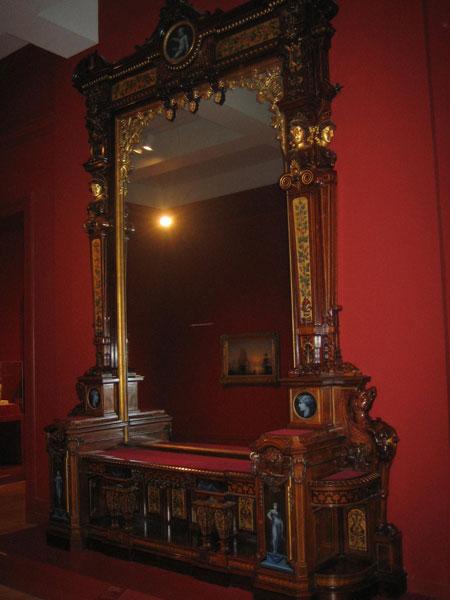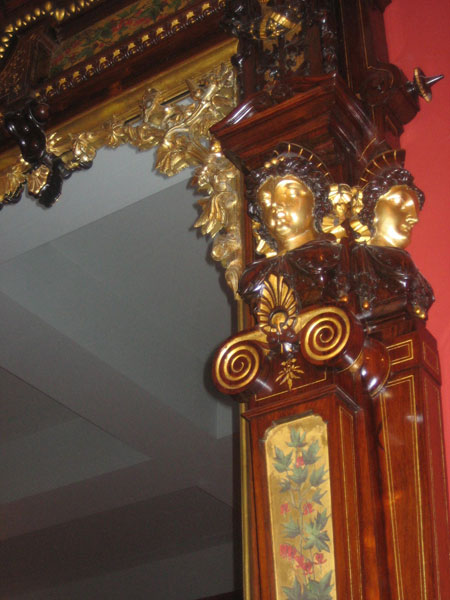I was staring at myself in the massive mirror which adorns the early American gallery on the second floor of the Art of the Americas Building when I got to thinking, “There’s got to be a story behind this thing.” It’s hard for me to imagine the context in which such a massive piece of furniture would be not only feasible to construct but also fashionable. Luckily, Don Menveg came to my rescue. After breaking me away from my own reflection he explained the provenance of the piece and how it wound up in LACMA’s permanent collection.
Throughout the Gilded Age (1865–1901), fashionable interior design became increasingly lavish, expensive, and resplendent with decoration. The crescendo of all this adornment is reflected in this mirror with its carved and inlaid wood, gilded statues, and painted figures. Because of limits on the ability to manufacture glass in large sheets, this single mirror pane was incredibly expensive. The mirror was used to adorn the music room of Milton Latham, former governor of California and railroad magnate. His mansion, designed by the Herter brothers of New York, was considered one of the finest residences in the San Francisco area and was constructed and furnished at a considerable price. Not long after the home’s completion in 1873 its owner went bankrupt, and in 1882 he passed away. The home was demolished in 1942, but many of its impressive features were salvaged.
In the wake of World War II, Hollywood studios bought up a lot of the lavish interior decorations of European homes to use as set pieces. The Herter mirror, with its European-style craftsmanship, met a similar fate. When LACMA acquired this piece in 1991 the mirror was covered in dulling spray so it would register more subtly on camera. Much of the carved surface, including the blue painted figures, was painted over, and the gilded faces were coated in bronze so they would be less reflective.
Restoring the Herter mirror was a multi-year project for Don and his colleagues. They used special enzymes to eat through the most recent coat of paint without destroying the underlying design, bringing the luster back to the mirror. It’s amazing how art objects absorb and record history. This piece in particular is interesting because it had been used by different people for different purposes. And yet, thanks to the efforts of the conservation center, it appears untouched by time.
Aaron Ziolkowski, Collections Information Intern






